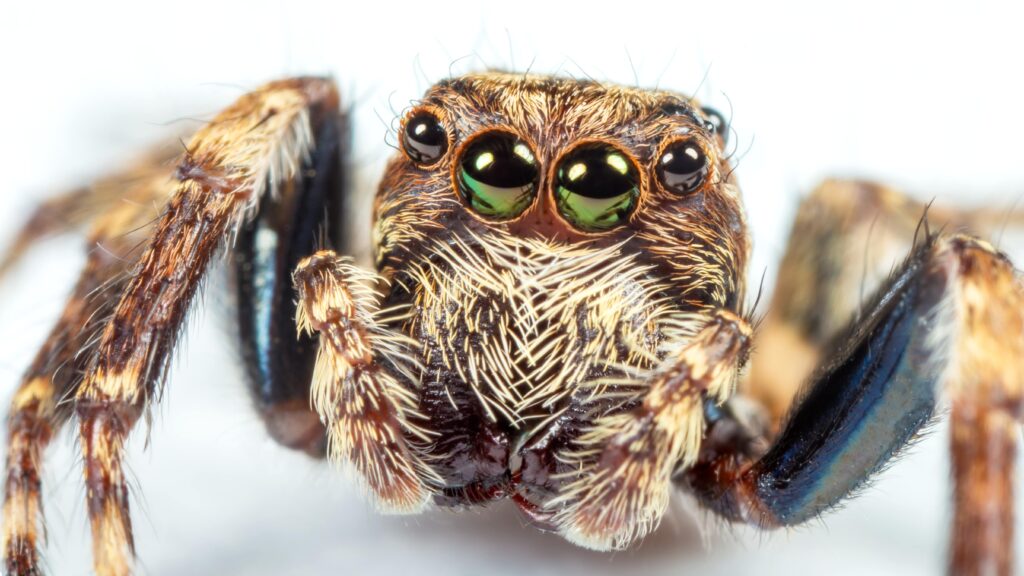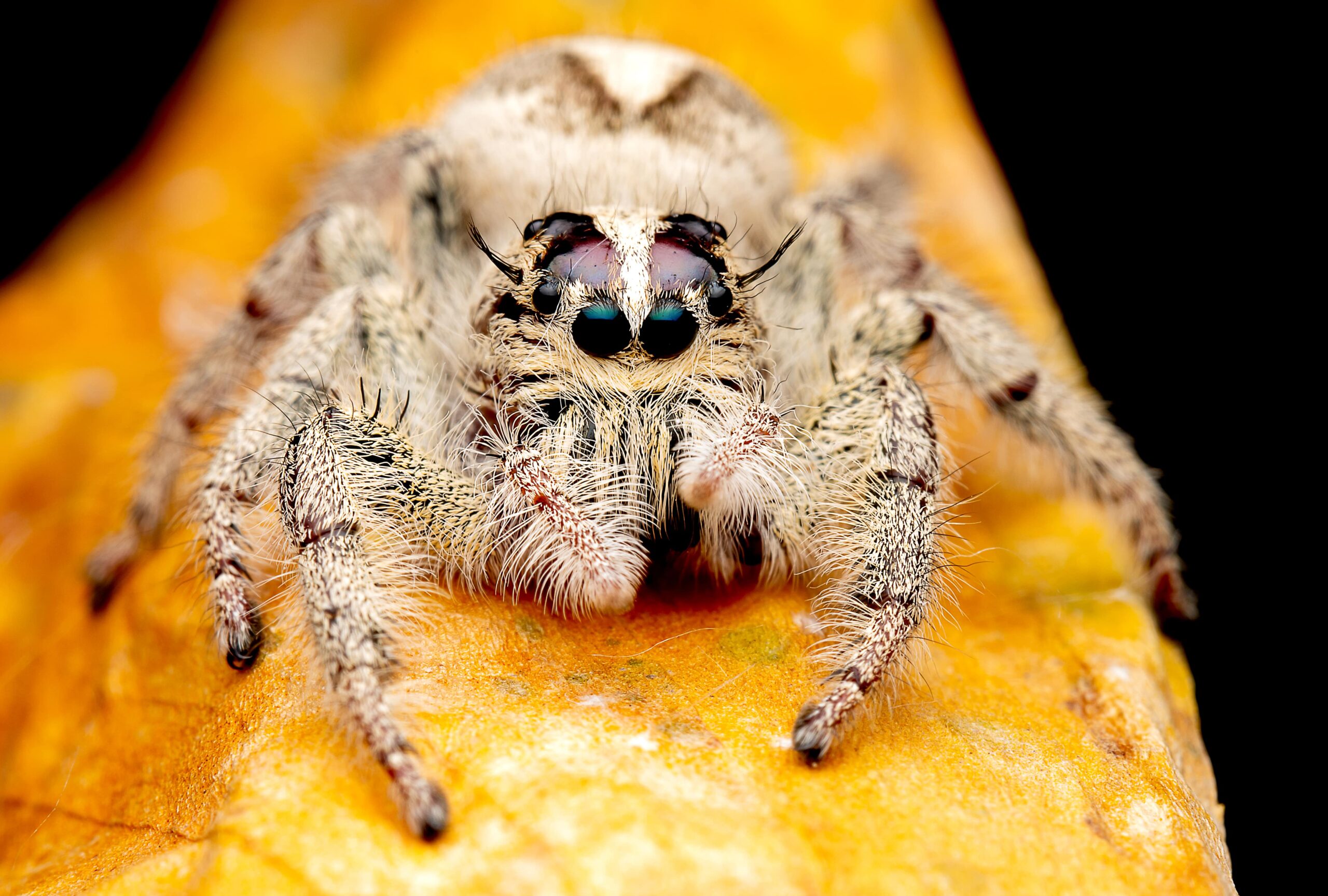Spiders – those eight-legged arachnids that often send shivers down our spines. They exist in a world of their own, with intricate designs, incredible agility, and an uncanny ability to spin silk for creating webs. But have you ever wondered if these fascinating creatures make any noise?
Do spiders have a way of communicating that goes beyond their silent, stealthy movements? Today, we embark on an exploration of the world of spider sounds to unravel the mystery surrounding this intriguing question.
Brief Overview of Spiders and Their Fascinating Characteristics
Before delving into the question at hand, let’s take a moment to appreciate the remarkable nature of spiders. These small but mighty creatures belong to the class Arachnida and are known for their unique features.
With over 48,000 different species found across the globe, spiders come in all shapes and sizes. From tiny ones measuring just a few millimeters to larger ones spanning several inches in diameter, they display an incredible diversity.
Spiders possess several fascinating characteristics that set them apart from other members of the animal kingdom. First and foremost is their ability to spin silk from specialized glands located in their abdomen.
This silk serves multiple purposes – from constructing intricate webs for trapping prey to building protective retreats or even creating parachutes for dispersal. Another remarkable trait domestic spiders is their predatory nature.
Spiders are skilled hunters who rely on stealth and precision to capture insects or other small creatures caught in their webs or encountered on the ground. Many species possess venomous fangs that inject potent toxins into their prey, swiftly immobilizing them before being consumed at leisure.
Intriguing Question: Do Spiders Make Noise?
Now comes the captivating question: what sounds do spiders make actually? When we think about animals producing sound, we tend to imagine calls or vocalizations like birds chirping, dogs barking, or even lions roaring.
However, spiders are not known for such overt auditory displays. Nevertheless, the world of spider sounds is far from silent; it just operates on a different wavelength – or rather, a different vibration.
While spiders do not possess vocal cords or structures like mammals do to generate audible noises and create sounds that our human ears can detect, they have developed alternative ways to communicate within their species and interact with their environment. Rather than relying on sound waves, spiders primarily use vibrations and subtle movements to convey information.
Stay tuned as we unravel the mysteries of spider communication and explore the fascinating realm of web vibrations and other surprising methods through which these eight-legged marvels express themselves. Prepare to be amazed by the hidden world of spider sounds that lies just beyond our perception!
Spider Communication

The Silent Language of Arachnids
When it comes to communication, spiders have devised an intricate system that relies primarily on non-verbal cues. While they don’t possess vocal cords like many other animals, these eight-legged creatures are far from being mute. In fact, their ability to communicate without uttering a single word is fascinating and worthy of exploration.
One of the most common modes of spider communication is through vibrations. Spiders rely heavily on sensing vibrations in their environment as a means to convey messages and gather information.
These vibrations can be both intentional and unintentional, serving various purposes such as courtship, territory marking, or even warning signals. Essentially, spiders use the art of vibration to speak their own silent language.
A Multitude of Modes
Within the realm of spider communication, there exists a diverse range of modes through which information is exchanged. One notable mode is known as pheromone signaling, where chemical cues are released by one spider and detected by another. This form of communication is especially prevalent among male spiders attempting to attract females.
Additionally, visual cues play a crucial role in male spider – interactions. For instance, some male spiders display vibrant colors or engage in intricate dancing rituals to impress potential mates or establish dominance over rivals.
The ability to visually communicate helps them navigate complex social dynamics within their communities. Furthermore, tactile interactions also come into play when spiders communicate with one another.
Touch sensations enable them to convey aggression or submission during territorial disputes or mating encounters. By engaging in specific physical behaviors like leg tapping or gentle pokes with appendages called pedipalps, spiders can effectively express their intentions without resorting to verbal exchanges.
Overall, while spiders may not possess vocal capabilities like many other creatures in the animal kingdom do, they have developed an array of sophisticated methods through which they can effectively communicate within their communities. By utilizing vibrations, pheromones, visual displays, and tactile interactions, these remarkable arachnids have mastered the art of silent communication.
Vibrations: The Silent Language of Spiders

Introduction to Spider Vibrational Communication
When we think of communication, we often envision words, sounds, or gestures. However, in the realm of arachnids, spiders have evolved a unique and fascinating method of communication: vibrations.
Unlike the audible noises made by various animals, spiders rely on intricate vibrations to convey messages to their kin. This silent language is a marvel of nature that allows these eight-legged creatures to communicate effectively without uttering a single word.
Elaboration on the purpose and significance of vibrations in spider interactions
For spiders, vibrations serve as an essential means for communication and interaction within their communities. These subtle tremors carry significant information about a spider’s intentions, emotions, and even warnings. One primary purpose is mate attraction; male spiders create vibrations that specifically target female spiders as they seek potential mates.
By producing distinct patterns and frequencies through different body movements or stridulation techniques (such as rubbing body parts together), males send out signals to attract females. Moreover, vibrations play a crucial role in territorial disputes between rival male spiders.
Like wolves that growl or dogs that bark to establish dominance or defend their territories audibly, some species employ vibrating displays akin to growls or barks. These strong vibrational signals assert dominance over competing males while simultaneously warning them against encroaching on claimed territories.
Additionally, vibrations allow spiders to communicate vital information about prey capture and web maintenance tasks within their intricate silk domains. Vibrating leaf-like patterns can mimic wind-blown debris caught on a spider’s web—effectively disguising it from potential predators while also alerting the web-building spider if there is any disturbance or potential prey entangled in its trap.
Although most people associate sound with communication among living beings, the world of arachnids has unfolded an extraordinary silent language. Through vibrations, spiders can attract mates, fend off rivals, protect territories, and even decipher environmental cues.
This unique method of communication showcases the remarkable adaptability and resourcefulness of these fascinating creatures. So, the next time you come across a spider spinning its delicate web or engaging in elaborate courtship rituals, remember that beneath their silence lies a vibrant universe of communication.
Web Vibrations: The Spider’s Melody

Exploration of how spiders use web vibrations to communicate
When it comes to communication, spiders have truly mastered the art of subtlety. While the vast majority of spider species may not make audible sounds, they have developed a remarkable method of using web vibrations as their primary means of communication.
Through delicate movements and patterns, spiders can convey valuable information to their fellow arachnids without making a single sound. Spiders utilize their silk-spun webs as finely tuned instruments, capable of transmitting vibrations across impressive distances.
By plucking or tugging on specific strands of their intricate webs, these eight-legged maestros generate unique patterns and frequencies that can be deciphered by other spiders nearby. These vibrations serve distinct purposes, including courtship rituals, territorial warnings, and even coordination during collective hunting efforts.
Discussion on the different types of web vibrations and their meanings
To truly appreciate the complexity of spider communication through web vibrations, we must dive into the fascinating world of arachnid linguistics. Different types of web vibrations convey various messages among spiders within a given species or even between different species in some intriguing cases. One common type of vibration is known as “purring.” This subtle vibrating motion is created when long-legged spiders gently strum their legs against specific threads in a rhythmic manner.
The purpose behind this purring sound of female spider varies; male spiders may use it as part of their courtship rituals to serenade potential mates, while some females might purr to signal receptiveness or appeasement during mating encounters. Another intriguing example is the vibrating leaf behavior observed in certain spider species.
These clever arachnids mimic the trembling movements and sound produced by wind-blown leaves to deceive unsuspecting prey or predators. By creating sounds similar to rustling foliage or vibrating insects caught in webs, these spiders lure their victims closer, ensuring a successful ambush.
In rare instances, some spider species produce chirping sounds by rapidly rubbing specific body parts together. Although not as prevalent as in other animals, these chirping spiders can create an audible noise that serves multiple functions.
Some use it to deter potential predators, while others employ it for territorial defense or attracting mates. So, while the question “Do spiders make noise?” might initially evoke images of barking sounds or growling arachnids, the reality is quite different.
The majority of spiders are silent creatures in the traditional sense. However, they have evolved an intricate system based on web vibrations to communicate effectively within their own unique melodious language.
Drumming, Stridulation, and Chirping: Audible Spider Noises

Insight into the few audible noises some spiders can produce
While many spiders are known for their silent nature, there are a select few that possess the ability to create audible sounds. These intriguing arachnids have evolved unique mechanisms to both produce sounds through vibrations and generate noises that serve various purposes in their lives. Let’s delve into some of these fascinating abilities and explore how certain spiders communicate through sound.
Drumming: How certain male spiders create rhythmic sounds for courtship purposes
In the realm of spider courtship rituals, drumming plays a crucial role for specific species. Male jumping spiders, for instance, exhibit quite an impressive performance when it comes to wooing potential mates.
Using their front legs as makeshift drumsticks, these charismatic dancers tap them against surfaces like leaves or bark with remarkable speed and precision. The rhythmic beats produced by this action are intended to attract females and signal their presence as potential partners.
Stridulation: Explanation of how specific species rub body parts to generate sound
Stridulation is another method by which some spiders create vibrations that result in audible sounds. This technique involves rubbing body parts together to produce unique noises. For instance, certain species of wolf spiders possess specialized arm-like appendages called stridulatory organs on their pedipalps or legs that create sound.
By rapidly moving these organs against rough surfaces or specialized ridges on their bodies, they generate distinct stridulatory sounds akin to purring or buzzing. These vibrations serve as a means of communication between individuals of the same species during various interactions.
Chirping: Uncovering the rare instances when spiders can produce chirping sounds
While not as common as other forms of spider communication, there have been rare instances where spiders have been observed producing chirping sounds. One intriguing example is the case of the “chirping leafhopper spider.” This unique arachnid, found in the rainforests of South America, has the incredible ability to mimic the sound of a vibrating leaf. By rubbing its specialized leg structures against each other, it creates a high-pitched buzzing sound that closely resembles the rustling noise made by leaves in the wind.
This ingenious adaptation helps these spiders attract female wolf spiders that mistake their chirping for potential prey. While most spiders are silent creatures relying on vibrations and other non-auditory forms of communication, there are remarkable exceptions to this rule.
Drumming, stridulation, and even rare instances of chirping demonstrate how some spiders have evolved to create audible sounds for courtship rituals or intraspecies communication. These abilities showcase the diversity and ingenuity within the fascinating world of spider noises.
Silent Predators: Stealthy Hunters in the Night

Examination of why most spiders remain silent during hunting activities
When we think of predators, we often imagine fierce creatures that roar or growl as they stalk their prey. However, the vast majority of spiders have adopted a different approach – they are silent hunters of the night. Unlike their roaring counterparts in the animal kingdom, spiders rely on stealth and silence to capture their unsuspecting victims.
But why do most spiders choose to remain silent during their hunting activities? The answer lies in their evolutionary adaptations and hunting strategies.
Spiders are skilled ambush predators, patiently waiting for an opportunity to strike. Remaining silent allows them to blend seamlessly into their surroundings, becoming virtually undetectable to potential prey. Explanation on how silence aids in their ability to capture prey effectively
Silence is a crucial tool that aids spiders in capturing prey effectively. When a spider remains completely still and quiet, it becomes nearly impossible for its unsuspecting victim to detect its presence. This gives the spider a significant advantage by allowing it to get close without triggering any warning signals.
Additionally, remaining silent helps prevent alerting other creatures in the vicinity that could potentially interfere with the spider’s hunt. By not producing any sounds or vibrations that could attract unwanted attention, spiders increase their chances of successful capture.
Some species also utilize stealthy techniques such as camouflaging themselves within their environment or disguising themselves as innocent objects like twigs or leaves. These strategies require absolute silence to go unnoticed by both prey and potential predators alike.
Spiders have evolved as silent hunters due to several reasons: remaining inconspicuous allows them to capitalize on surprise attacks and minimizes the risk of alerting nearby creatures during hunting activities. By mastering these tactics over millions of years, these fascinating arachnids have become experts at using silence to their advantage in the realm of predation.
Curious Cases: Unusual Spider Sounds
A Discussion on unique cases where certain species have been found to produce unexpected sounds.
Spiders are generally known for being silent creatures, but there are intriguing cases where certain species have been discovered to produce unusual sounds. These unexpected noises serve various purposes, from communication and courtship to defense mechanisms. Let’s delve into some fascinating examples of spiders that break the silence.
One remarkable case involves the aptly named “barking spider,” a common colloquial term used for certain species of tarantulas. Despite the name, these spiders do not actually bark like dogs.
Instead, they create a hissing sound by rubbing body parts together. This hissing noise is produced when air is expelled from their exoskeleton through tiny slits called spiracles.
The resulting sound can be quite startling, resembling a soft but distinct hiss or whistle. Such auditory displays are typically used as a form of intimidation or defense to deter potential predators.
Another intriguing example comes from jumping spiders, famous for their incredible agility and vibrant colors. Some male jumping spiders exhibit rather unique behaviors during courtship rituals by producing buzzing sounds with their front legs.
These buzzing sounds are created when they rapidly vibrate their legs against surfaces such as leaves or other objects in their environment. By doing so, male spiders aim to attract female partners and communicate their interest in mating.
In addition to hissing and buzzing sounds, there have been instances where certain wolf spider species mimic other animals’ noises as a means of survival or deception. For instance, some female wolf spiders emit high-pitched whistling sounds that resemble the chirping of crickets or grasshoppers.
This mimicry helps them lure unsuspecting prey closer to capture them swiftly and efficiently without alerting potential victims of their presence. Overall, while most spiders remain largely silent creatures, making noise only in their daily activities, these curious cases demonstrate that the arachnid world holds surprising sonic surprises.
Whether it’s hissing, buzzing, or cleverly mimicking other animals’ noises, these unique spider sounds shed light on the diverse and intricate ways in which spiders communicate, defend themselves, and navigate their environments. It’s a reminder that there is much more to these fascinating creatures than meets the eye.
Conclusion
A Recapitulation on spider communication methods
Throughout this article, we’ve delved into the fascinating world of spider communication. While many animals rely heavily on audible sounds to communicate, spiders have developed unique and intricate methods of conveying messages without making any noise that can be detected by human ears.
Their primary mode of communication is through vibrations, which they generate in a variety of ways. Spiders primarily use vibrations for courtship rituals, territorial disputes, warning signals, and even hunting strategies.
Vibrations are created by rubbing body parts together, such as legs or specialized structures called stridulatory organs. These vibrations can travel through various substrates like webs or the ground and are sensed by other spiders through specialized receptors located on their bodies.
Answering the initial question – Yes, while most spiders are silent creatures
So, do spiders make noise? The answer is yes and no.
While most spiders are silent creatures that rely predominantly on vibrations for communication purposes, there are a few exceptions to this rule. Some male spiders have developed peculiar ways to create audible sounds for attracting female partners during courtship rituals.
For instance, certain species of wolf spiders produce chirping sounds by rubbing specific body parts against each other. In addition to these rare cases of chirping sounds, some other male wolf spiders have also been found to produce hissing noises as a defense mechanism when threatened.
However, it’s important to note that these audible spider noises are relatively uncommon and not part of the typical repertoire for most spider species. While we may not often hear spider noises with our own ears due to their reliance on vibrations rather than audible sound production, it is awe-inspiring to uncover the intricacies behind their silent communication methods.
These remarkable creatures have evolved an astonishing array of techniques to convey messages without relying on traditional means like vocalizations or sound waves in the air. So, the next time you come across a spider, take a moment to appreciate the secret world of vibrational communication in which they thrive.
Overcome spider issues with D-Termination: The foremost pest control service in Las Vegas!

Worried about the presence of spiders on your Las Vegas property? Look no further than D-Termination, your ultimate solution. Our team of experts specializes in eradicating spider infestations, bringing back serenity and calm to your space. Bid farewell to spiders today—opt for D-Termination’s effective pest control.
Reach out to us at 702-919-6310 or visit dtermination.com to schedule your spider control service and take back your space from these undesirable pests.
Frequently Asked Questions:
Spiders typically don’t make audible sounds, but they can produce vibrations.
Spiders don’t usually create noticeable sounds.
No, spiders don’t chirp like some insects do.
No, spiders generally don’t make buzzing sounds.








